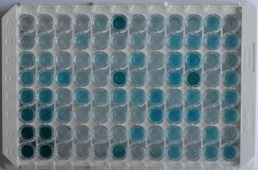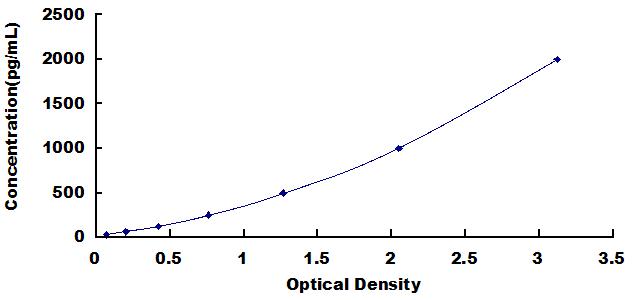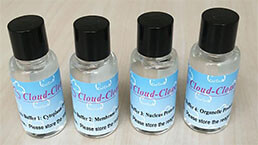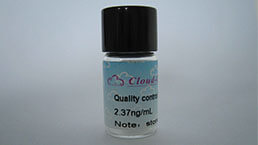Packages (Simulation)

Reagent Preparation

Image (I)
Image (II)
Certificate


Mini Samples ELISA Kit for Hepatocyte Growth Factor (HGF)
HGF; F-TCF; HGFB; HPTA; SF; Scatter Factor; Hepapoietin A; Fibroblast-Derived Tumor Cytotoxic Factor; Lung Fibroblast-Derived Mitogen
- Product No.MEA047Hu
- Organism SpeciesHomo sapiens (Human) Same name, Different species.
- Sample TypeSerum, plasma, tissue homogenates, cell lysates, cell culture supernates and other biological fluids
- Test MethodDouble-antibody Sandwich
- Assay Length3h
- Detection Range31.2-2,000pg/mL
- SensitivityThe minimum detectable dose of this kit is typically less than 13.1pg/mL.
- DownloadInstruction Manual
- UOM 48T96T 96T*5 96T*10 96T*100
- FOB
US$ 374
US$ 534
US$ 2403
US$ 4539
US$ 37380
For more details, please contact local distributors!
Specificity
This assay has high sensitivity and excellent specificity for detection of Mini Samples Hepatocyte Growth Factor (HGF).
No significant cross-reactivity or interference between Mini Samples Hepatocyte Growth Factor (HGF) and analogues was observed.
Recovery
Matrices listed below were spiked with certain level of recombinant Mini Samples Hepatocyte Growth Factor (HGF) and the recovery rates were calculated by comparing the measured value to the expected amount of Mini Samples Hepatocyte Growth Factor (HGF) in samples.
| Matrix | Recovery range (%) | Average(%) |
| serum(n=5) | 96-105 | 101 |
| EDTA plasma(n=5) | 82-105 | 101 |
| heparin plasma(n=5) | 78-95 | 83 |
Precision
Intra-assay Precision (Precision within an assay): 3 samples with low, middle and high level Mini Samples Hepatocyte Growth Factor (HGF) were tested 20 times on one plate, respectively.
Inter-assay Precision (Precision between assays): 3 samples with low, middle and high level Mini Samples Hepatocyte Growth Factor (HGF) were tested on 3 different plates, 8 replicates in each plate.
CV(%) = SD/meanX100
Intra-Assay: CV<10%
Inter-Assay: CV<12%
Linearity
The linearity of the kit was assayed by testing samples spiked with appropriate concentration of Mini Samples Hepatocyte Growth Factor (HGF) and their serial dilutions. The results were demonstrated by the percentage of calculated concentration to the expected.
| Sample | 1:2 | 1:4 | 1:8 | 1:16 |
| serum(n=5) | 93-101% | 80-103% | 91-105% | 86-94% |
| EDTA plasma(n=5) | 96-105% | 88-97% | 90-101% | 93-101% |
| heparin plasma(n=5) | 84-101% | 89-105% | 89-104% | 78-104% |
Stability
The stability of kit is determined by the loss rate of activity. The loss rate of this kit is less than 5% within the expiration date under appropriate storage condition.
To minimize extra influence on the performance, operation procedures and lab conditions, especially room temperature, air humidity, incubator temperature should be strictly controlled. It is also strongly suggested that the whole assay is performed by the same operator from the beginning to the end.
Reagents and materials provided
| Reagents | Quantity | Reagents | Quantity |
| Pre-coated, ready to use 96-well strip plate | 1 | Plate sealer for 96 wells | 4 |
| Standard | 2 | Standard Diluent | 1×20mL |
| Detection Reagent A | 1×60µL | Assay Diluent A | 1×6mL |
| Detection Reagent B | 1×60µL | Assay Diluent B | 1×6mL |
| TMB Substrate | 1×4.5mL | Stop Solution | 1×3mL |
| Wash Buffer (30 × concentrate) | 1×10mL | Instruction manual | 1 |
Assay procedure summary
1. Prepare all reagents, samples and standards;
2. Add 25µL standard or sample to each well. Incubate 1 hour at 37°C;
3. Aspirate and add 25µL prepared Detection Reagent A. Incubate 1 hour at 37°C;
4. Aspirate and wash 3 times;
5. Add 25µL prepared Detection Reagent B. Incubate 30 minutes at 37°C;
6. Aspirate and wash 5 times;
7. Add 25µL Substrate Solution. Incubate 10-20 minutes at 37°C;
8. Add 20µL Stop Solution. Read at 450nm immediately.
GIVEAWAYS
INCREMENT SERVICES
| Magazine | Citations |
| Gene Therapy and Molecular Biology | Sphingosine kinase-1 protects transplanted mesenchymal stem cells and improves the performance of the infarcted heart LWW: 01000 |
| Journal of Translational Medicine | Low temperature of radiofrequency ablation at the target sites can facilitate rapid progression of residual hepatic VX2 carcinoma BioMed: 14795876 |
| Digestive Diseases and Sciences | Gene Transfer of c-met Confers Protection Against d-Galactosamine/Lipopolysaccharide-Induced Acute Liver Failure SpringerLink: k22823l138x2344x |
| Biomarker insights | Correlation Between Hepatocyte Growth Factor (HGF) and Gamma-Aminobutyric Acid (GABA) Plasma Levels in Autistic Children PubMed: PMC3694825 |
| Biomarker insights | Decreased Hepatocyte Growth Factor (HGF) and Gamma Aminobutyric Acid (GABA) in Individuals with Obsessive-Compulsive Disorder (OCD) PubMed: PMC3762604 |
| BMC cell biology | BMSCs reduce rat granulosa cell apoptosis induced by cisplatin and perimenopause PubMed: PMC3640998 |
| Cell Journal (Yakhteh) | Effect of Mesenchymal Stem Cells on Doxorubicin-Induced Fibrosis PubMed: PMC3584430 |
| Gastroenterol Res Pract | Proinflammatory Cytokines (IL-1α, IL-6) and Hepatocyte Growth Factor in Patients with Alcoholic Liver Cirrhosis PubMed: 26448742 |
| Tumor Biology | Hypoxia-induced secretion of IL-11 from adipose-derived mesenchymal stem cell promotes growth and cancer stem cell properties of Burkitt lymphoma PubMed: 26695151 |
| Cytotherapy | Cell type–dependent variation in paracrine potency determines therapeutic efficacy against neonatal hyperoxic lung injury PubMed: 25863963 |
| Biomedicine & Pharmacotherapy | Silymarin-loaded Eudragit® RS100 nanoparticles improved the ability of silymarin to resolve hepatic fibrosis in bile duct ligated rats Pubmed:27261582 |
| Can J Physiol Pharmacol. | Piceatannol increases the expression of hepatocyte growth factor and IL-10 thereby protecting hepatocytes in thioacetamide-induced liver fibrosis Pubmed:27186801 |
| Genet Mol Res | Changes in growth factor levels in the cerebrospinal fluid of autism patients after transplantation of human umbilical cord blood mononuclear cells and umbilical cord-derived mesenchymal stem cells Pubmed:27323064 |
| Changes in HGF levels after a progressive test before and after Tabata HIIT program profile:Pawel_Wolanski3 | |
| Stem Cell Research & Therapy | Effects of low-intensity pulsed ultrasound (LIPUS)-pretreated human amnion-derived mesenchymal stem cell (hAD-MSC) transplantation on primary ovarian insufficiency in rats 10.1186/s13287-017-0739-3 |
| Oncology Letters | Carcinoma associated fibroblasts derived from oral squamous cell carcinoma promote lymphangiogenesis via c‑Met/PI3K/AKT in vitro 10.3892/ol.2017.7301 |
| Stem Cell Research & Therapy | Overexpression of c-Met in bone marrow mesenchymal stem cells improves their effectiveness in homing and repair of acute liver failure. pubmed:28679425 |
| Nature Communications | Pulmonary pericytes regulate lung morphogenesis Pubmed:29934496 |
| Experimental And Molecular Medicine | Interleukin-1 receptor antagonist-mediated neuroprotection by umbilical cord-derived mesenchymal stromal cells following transplantation into a rodent stroke … Pubmed:29650950 |
| Oncology Letters | Carcinoma associated fibroblasts derived from oral squamous cell carcinoma promote lymphangiogenesis via c-Met/PI3K/AKT in vitro Pubmed:29375714 |
| Bulletin of Experimental Biology and Medicine | Dynamics of Expression of Cytokine Genes and Macrophage Content in the Lungs and Kidneys after Subtotal Hepatectomy in Rats Pubmed:29796817 |
| Cell Biology International | Inherent control of hepatocyte proliferationInherent control of hepatocyte proliferation after subtotal liver resection Pubmed: 31297922 |
| Journal of stem cells & regenerative medicine | What is the Best Degree of Hyaluronic Acid Crosslinking in Increasing Growth Factors Level of Platelet-Rich Fibrin Lysate? Pubmed: 31239605 |
| Open Journal of Veterinary Medicine | Efficacy of autologous bone marrow mononuclear cell transplantation in dogs with chronic spinal cord injury Pubmed: 32821665 |
| Stem Cell Reviews and Reports | Prospects on the Potential In Vitro Regenerative Features of Mechanically Treated-Adipose Tissue for Osteoarthritis Care 33469783 |
| Molecular Biology Reports | Umbilical cord-derived mesenchymal stem cell conditioned medium reverses neuronal oxidative injury by inhibition of TRPM2 activation and the JNK signaling … Pubmed:35585377 |













